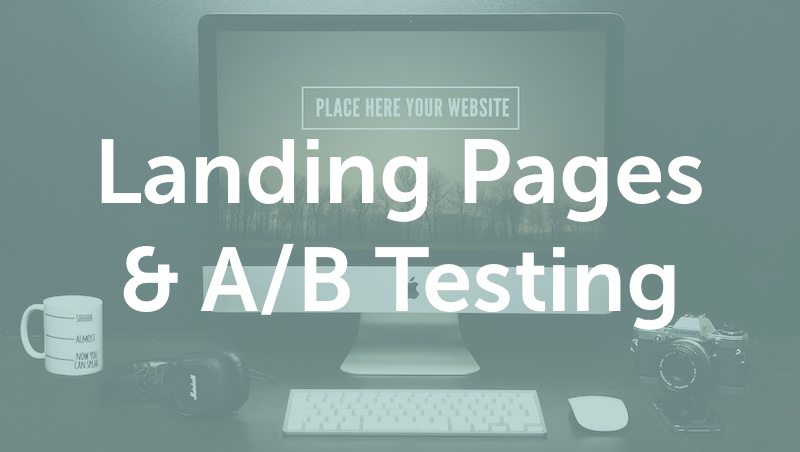Landing Pages and A/B Testing
Episode #4 of the course Startup marketing for everyone by Jonah Bliss
So, you’ve set up all your amazing search advertisements, and traffic is flowing to your website. But where exactly are all those visitors landing? Your homepage? Your product page? Your news page? The fact is, depending on which ad your visitor clicked, it might make sense to send them to different pages containing copy and design most relevant to the promotion that brought them in.
Landing Pages Made Easy
You could make custom promotional pages using whichever tool you’ve built the majority of your website with. But your overall website probably offers visitors many tools and loads of information. A landing page should be simple, geared toward completing whatever promise you just made in the advertisement that drove the visitor there in the first place. Maybe you’re collecting contact information to follow up with sales material. Maybe you’re asking for email addresses so you can send them a newsletter full of your freshest content. Maybe it’s a simple download link to install your application.
A quick hint: Offering visitors something in return for their information, be it a PDF ebook, a coupon, etc. will improve your conversion rate (the percent of people who complete the form).
Using specialized landing page services will make creating all these various pages much quicker and easier, and they will be specifically geared toward managing the information brought in by these pages (phone numbers, email addresses, etc).
Leading landing page tools include Unbounce and Instapage. They’ll cost you $30-50 per month (Instapage is cheaper), but they are well worth it if you are trying to generate a lot of leads (that is, potential customers) for your business, and they generally include a free trial period.
Learn Your ABCs
Perhaps the biggest advantage of tools like these is that they make it easy to do A/B (or “multivariate”) testing. Let’s say you’ve created a landing page for people signing up for your newsletter. This isn’t a one-and-done type of job—you’re going to be continuously improving this page to get you more and more email addresses.
Initially, you might create two variants of this page, say with different headlines. The software will automatically direct half your traffic to one page and half to the other. After a while, you may see that Page A is collecting email addresses from 15% of visitors, while Page B is getting them from 20% of those who come to the page (the rest “bounce” away). So kill off Page A and then move on to the next experiment.
You can then maybe compare the text on the button, say “Sign up now” versus “Done” (or maybe you’re more creative than I am). Run the test until you have a statistically significant population, and then kill off the losing page and repeat with the next experiment (photos of smiling customers versus cute puppies?).
A/B testing is great because it lets you continuously improve your results. Once you’ve gotten comfortable with it on landing pages, you can apply these same techniques to your homepage, emails, or basically anything else you distribute online. If you can measure it, you can improve it!
Recommended book
“Hooked: How to Build Habit-Forming Products” by Nir Eyal
Share with friends

